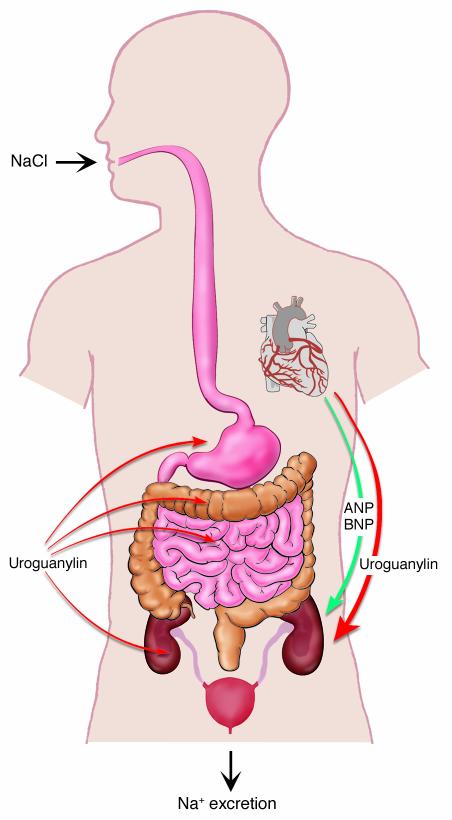Figure 2.
An endocrine axis linking together the GI system and kidney via uroguanylin produced in the stomach and/or intestine and secreted into the circulatory system. The studies of Lorenz et al. (7) support the concept that uroguanylin may play a key physiological role serving as a natriuretic hormone produced by the GI system and released into the circulatory system when excess NaCl is ingested. Atriopeptin-A (ANP), atriopeptin-B (BNP), and uroguanylin derived from the myocardium may, in some circumstances, also contribute to the natriuresis elicited by high salt loads in the postprandial state. Not shown in this model is the renal production of uroguanylin, guanylin, and atriopeptins, which could participate in intra-renal mechanisms that regulate tubular sodium transport and thus contribute to the saliuresis elicited by oral salt loads. A potential role for uroguanylin and/or guanylin in the CNS to influence the appetite for salt should also be considered in future studies. Figure modified with permission from the American Journal of Physiology (24).

